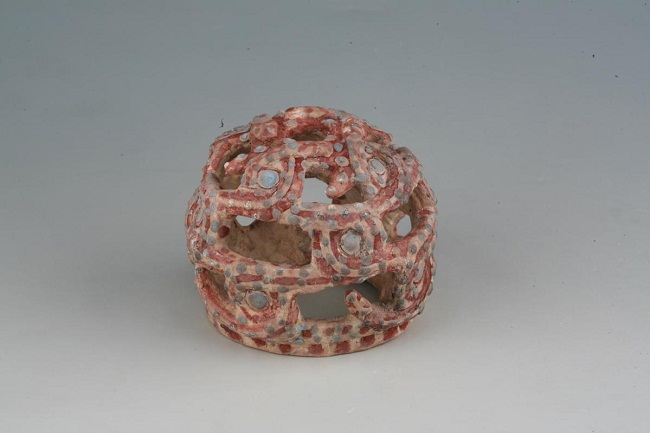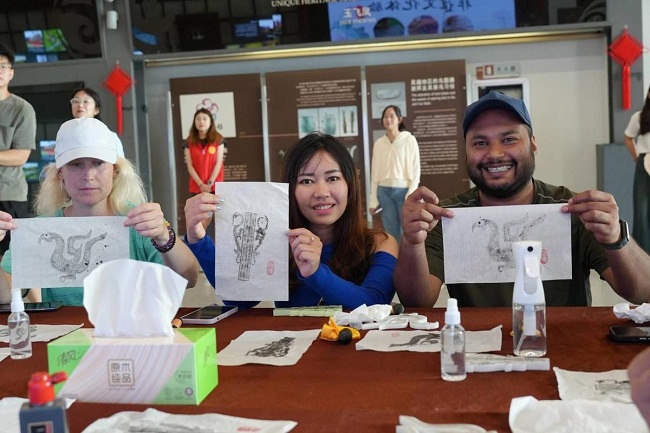Expats explore Wuxi, appreciate city's emblematic logo

The ancient culture and civilizations of China have always been a thirst for curious expats and on June 11, a diverse group of international friends participated in a trip to the Hongshan Site Museum in Wuxi, East China's Jiangsu province, for cultural exploration.
Upon setting foot inside the museum, the eight-member group was immediately drawn to the centerpiece that commanded attention from its display — a breathtaking openwork snake ball.
Though excavated with history linking to the Warring States Period (475-221 BC), no reference to modern or past literature illustrates this exquisite artifact. The work was intricately crafted by skilled artisans of the ancient past and stood as a testament to the artistry and ingenuity of the Wuyue culture.

The openwork snake ball shows the skills of artisans of the ancient past. [Photo provided to chinadaily.com.cn]
As the expats' eyes swept the museum's halls, they encountered a myriad of ancient relics, each telling a story of its own. Ancient pottery, bearing witness to the dexterity of ancient hands, revealed intricate patterns and delicate motifs, providing glimpses into the daily lives of antiquity.
Battle instruments, weathered by the passage of time, silently spoke of the wars fought and victories won, shedding light on a turbulent past that shaped the destiny of the region.
Beyond the tangible artifacts that adorned the museum's halls, the group explored the history of Wuxi's fascinating past. They sought to understand the significance of the city's emblematic logo—a resplendent phoenix.
With a keen eye for detail, they observed that the city logo was divided into two distinct halves.
The upper portion, awash in a delicate pink hue, represented the blooming of ethereal blossoms, an embodiment of beauty and resilience. The lower half, bathed in serene shades of blue, symbolized the tranquility of the lake that cradled the city, a reflection of harmony and serenity.
Immersing themselves in the cultural heritage of the region, the group engaged in a hands-on experience guided by the museum's host. Through the ancient mediums of paper and ink, they endeavored to capture the essence of mythical creatures that had long been revered in Chinese folklore.
The strokes of their dabbing ink brushes danced across the paper, giving life to timeless depictions of majestic phoenixes and awe-inspiring dragons.
"I love what we did here and got hands-on experience of this art, a cherished intangible cultural heritage," said Mohammad Shariful Siddique from Bangladesh."My journey here opened my eyes in appreciation and left me enriched beyond measure."

Mohammad Shariful Siddique (right) experiences the crafts of ink-rolling to make patterns of the ancient artifacts. [Photo provided to chinadaily.com.cn]







